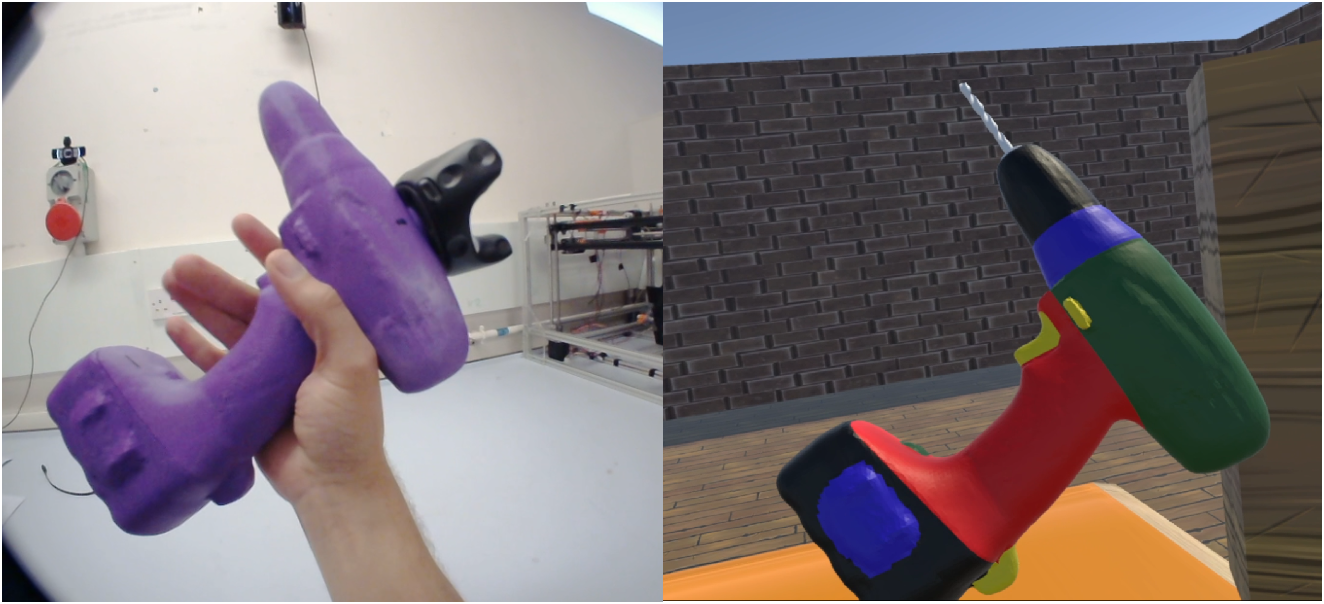Mixed Reality (MR) technologies have emerged as potential game-changers in the design landscape, offering a dynamic blend of physical and virtual elements. Designers are increasingly drawn to MR for its potential to elevate, enrich, and expedite prototyping endeavors. One intriguing aspect is MR’s ability to deceive our senses, bridging the gap between the virtual and physical worlds to make prototypes feel fully realized.
The allure is clear: substantial savings in time and resources by sidestepping the need for elaborate, resource-intensive prototypes through the use of virtually enhanced, tangible prototypes. Yet, a critical knowledge gap remains – how can we best leverage the interplay of physical and digital elements to optimize user perception and design outcomes?
To assess the impact of physical and virtual prototype fidelity, a crucial measure of construction time and cost, on user perception, we have created a demonstration MR prototype of a cordless electric drill.
This prototype demo uses a low-fidelity, modular physical prop with variable mass properties using brass inserts (shown below). This physical asset is tracked in 3D space and overlayed in a virtual environment which can be viewed and interacted in VR (virtual reality) using a Head Mounted Display (HMD).

Brass inserts allow the rapid exploration of the design space by varying the prototype mass properties.
By twinning the physical and virtual assets, a participant will perceive a single, congruent prototype, but the designer has significant control over the appearance and physical characteristics. By varying the virtual assets, a single physical asset can represent an entire design space that can be quickly navigated, whilst maintaining the physical tangibility and interactivity of the physical object.
This tech demo will be used to investigate the role of mass, visually perceived size, and physically perceived size in shaping user impressions of various design iterations within an MR prototype. Furthermore, the capability of the virtual, visually perceived assets to influence the overall perception of the physical properties of the prototype will be characterised.
As we navigate the evolving landscape of design technologies, understanding these nuances becomes paramount. Stay tuned for more insights as we unlock the secrets to maximizing the value of Mixed Reality in the realm of prototyping.

Example of a participant interacting with the MR drill prototype

